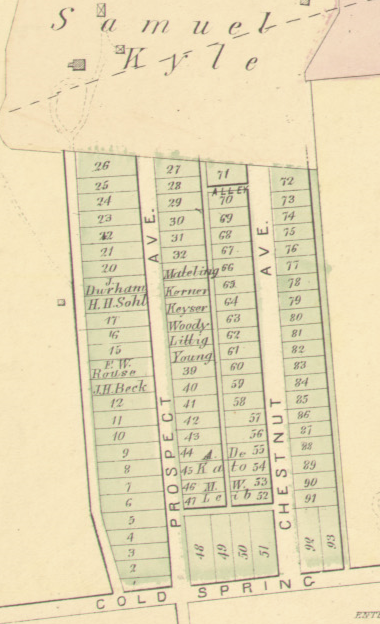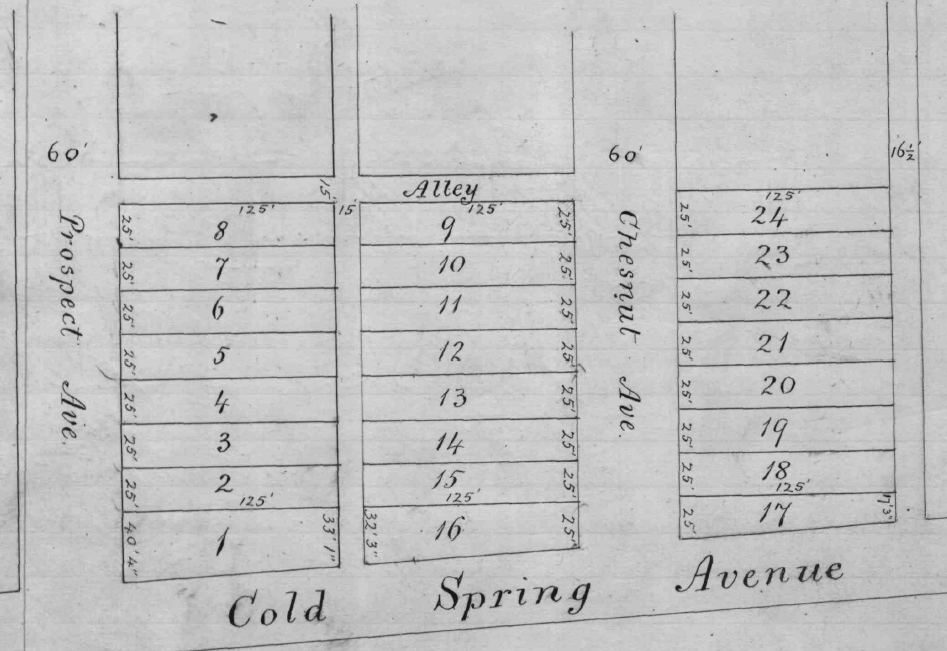The Founder of Evergreen: Charles J. Hull
(Separate stories will cover the ~20 different owners from ~1800-1890 of the two plots of land that now make up Evergreen and the other(!) Charles Hull who gave it its name.)
As this story is posted in January 2024, the Evergreen 21210 history page reads:
Two men named Brooks and Barton bought this and three other parcels from Mrs. Chapman in 1873. Soon after, the property was "developed".
The likely source of the above quote (including the "developed" in parentheses) is an article by William B. Marye: "Baltimore City Place Names: Stony Run, Its Plantations, Farms, County Seats and Mills" in the December 1963 issue of the Maryland Historical Magazine:
This adds a few more details, but is still missing the true founder of what was to become (West) Evergreen: Charles Jerold Hull, a larger than life businessman and philanthropist, who is still celebrated in Chicago! After reading this amazing biographical sketch, we can only be humbled that he stood at Evergreen's cradle - even if he only saw us as a good business opportunity. The sketch quotes widely from a more contemporary biography which appears in the Magazine of Western History, Vol. XIV, May-October 1891, which states:
|
 Charles Jerold Hull |
Today, historical land patents, deeds, etc. are available through the Maryland land records website, MdLandRec.net, of the Maryland State Archives, greatly simplifying this research. Unless stated otherwise, deeds linked here are credited to the Maryland State Archives and any use of the documents must adhere to their Acceptable Use Policy. Note that all images link to the actual deeds, plats, etc.
Our story starts with Allen A. Chapman and the two trustees, Brooks and Barton mentioned above.
| In a deed dated May 10, 1864, Frances Thwaites Fendall sells a 19 3/4 acre lot to Allen A. Chapman for the sum of $5,925. At that time the land is undeveloped and probably covered in woods and fields. A 30-foot wide "avenue" ran along the western edge from Cold Spring Road (later renamed to "Avenue" and finally to "Lane") to a home on a lot to the north owned by Samuel Kyle (see map below), the husband of one of Frances' daughters, Anne Evelyn. |
 |
That "avenue" became Maynadier Road, likely named after Jeremiah Yellot Maynadier, the husband of another one of Frances' daughters, Alice Fitzhugh Lee.
On October 9, 1872, Chapman is declared bankrupt as part of the bankruptcy of Kirkland, Chase & Co. The fallout of that bankruptcy was fought upto the United States Supreme Court and is described in detail here.
On October 25, 1872, R. Stockett Matthews, Register(?) in Bankruptcy court, conveys all the property of Allen Chapman to the duly chosen and appointed assignees, our two men from above: Walter B. Brooks and Randolph Barton, and on March 18, 1873, the United States District Court orders the sale of these properties.
| Allen Chapman's wife, the Mrs Chapman mentioned above, is a co-owner of four of the properties, including what would become West Evergreen, but is herself not declared bankrupt. Therefore, on March 28, 1873, Brooks and Barton buy her out of her dower rights for $1,135.10 to obtain clean titles. (note the deed says "ten cents" and not "two"). |  |
| On April 23, 1873, the properties are offered for sale at the Exchange Sales Rooms of Baltimore City. The highest bidder at $11,900 is our Charles J. Hull. The deed is dated and recorded on May 3, 1873. |  |
This quote from his biographical sketch may explain why Hull picked this lot in the middle of nowhere:
How differently men see.... "Two neighbors on Sunday afternoon wander into the suburbs of the city for an airing, and come upon an open block of ground. The one says he would like to have it as a pasture for his horse. The other calculates carefully its distance from the center of the city, and sees that the main avenue, when extended, will run through this ground. On Monday he buys it. Soon he gets the avenue extended, puts up a block of brownstone fronts and makes a fortune, while his neighbor is still hunting a pasture for his horse."
 Hull's original 1873 subdivision |
On June 20, 1873, Hull's subdivision of the lot (left) is registered with Baltimore County. Hull does not name it, nor did he name any of his other purchases around Baltimore. All subsequent transactions regarding his subdivision reference it as "C.J. Hull's subdivision of 19 3/4 acres of land fronting south on Cold Spring Road". It takes another 25 years to become known as "West Evergreen" and eventually as part of "Evergreen", but that is another story. On October 10, 2023, the Evergreen community celebrated its 150th anniversary.
The subdivision shows 93 lots on Prospect Avenue, Chestnut Avenue, and Cold Spring Road. The 1876 map of Baltimore County (right) shows the original subdivision, now on Cold Spring Avenue (east of Charles St. it is Cold Spring Lane), still without any buildings, but including the names of the first lot owners. |
 From C.M. Hopkins' 1876 City Atlas of Baltimore Maryland and Environs. |
 See the full plat. |
On September 24, 1887, 14 years after his initial subdivision, Hull changes the orientation of the lots on Cold Spring Avenue so they now front on Prospect and Chesnut (note the missing "t") and halves them in size. This indicates they still hadn't sold, possibly because they were larger and therefore more expensive than the other lots. That is the last significant change to West Evergreen. On February 12, 1889, Charles J. Hull dies unexpectedly while on travel in Houston, TX, but it is not the end of our story. To be continued ...
If you haven't already, do read Hull's biographical sketch. It will leave you in awe. |